Water is an important natural resource and it gives life to plants, animals and humans. When you are growing your own food at home you should never take water for granted and must do all you can to conserve water. Also when you are away from home you need to make sure that you plants are watered everyday. Self Watering Pots can solve this problem to a great extent while conserving water. After we made a post on Correct way of Watering, one of our readers wanted us to write about Self Watering Containers. And though we are a little delayed, here is the post finally. Additionally we are also going to talk about what can you do to conserve water.
Simple Ways to Conserve Water
There are very simple ways to conserve water by making some habit changes in our daily lives. Watering your plants in the right way and not over watering is one of the best things you can do as a gardener to conserve water. Mulching helps in reducing evaporation to a bare minimum and hence it must be done to conserve water.
In the monsoons find easy ways to catch surface water and use it. Even if you do not have a proper rainwater harvesting system you can just place a drum at a places where water is drained out from your terrace. This will catch a lot of water and you can use this water in your garden when its not raining. Other simple change that you can bring into your life is not to throw away the water with which you wash your vegetables, fruits, rice and pulses. Just store this water in a separate container in the kitchen and next morning use it to water your plants in the garden. Small steps can make a big difference.
Olla Watering System
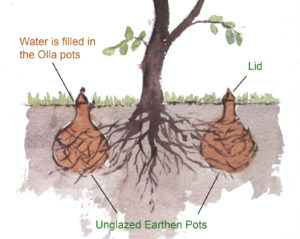
Olla watering systems fall into the no nonsense class of self watering container. Because it is such a simple thing it is easy to overlook it. But it is a great way to ensure that you are having as close to 100% water utilization as possible. An un-glazed earthen pot with a narrow opening is buried into the ground such that the opening is at the ground level. Water is filled through the opening and it is covered so that evaporation does not take place. The roots of the plants nearby reach the earthen pot looking for water. The roots then suck the water through the micro pores of the earthen pot.
Most of the water in conventional irrigation is lost to evaporation. In Olla watering system there is no loss due to evaporation and plants are able to get water in an hydroponic sort of way so to say. It is a simple and great self watering system for open garden beds. If you have big containers in your terrace garden you can use this system. Bury earthen pots in big size containers or gardens at regular intervals like a matrix. And when plant roots grow big enough to reach the Ollas, you can do watering through olla system only.
DIY Wick Based Self Watering Container
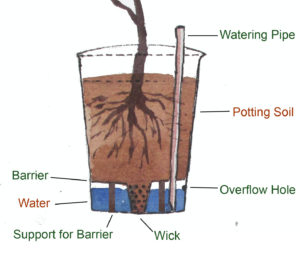
These are the more popular self watering container which come in all sizes. In this method water moves from bottom to up unlike the top down watering that we are used to. There is a water storage space at the bottom of the container. The growing media in the pot above the water is connected to the water through a wick. The water is sucked up by the wick and through capillary action reaches all parts of the growing media.There is a water filling tube which goes all the way upto the top of the container and water is filed through it. A overflow hole just below the top of the wick makes sure that water in the storage space does not touch the growing media directly.
I am going to demonstrate how to make a wick based self watering container using waste materials from home. It is a small self watering container. But as I said it comes in many sizes and you can use this method and concept to build bigger self watering pots.
All I used to make this container are
- Old plastic paint bucket
- Discarded plastic medicine bottle
- A piece of discarded plastic pipe
- Small pieces of discarded styrofoam

I took a small plastic paint bucket and cleaned it thoroughly. I then cut around the lid of the bucket using a pair of scissors. This circular cut out would work as the barrier between my water storage and potting soil space.
For the wick I used another small plastic medicine bottle and made holes all around it. Next I drew a circle near the center of my barrier using the wick and cut it out using a pair of scissors again. For the watering pipe I cut out another hole on the side. The small holes in the barrier in the above image are breathing holes for the potting soil and it is optional.
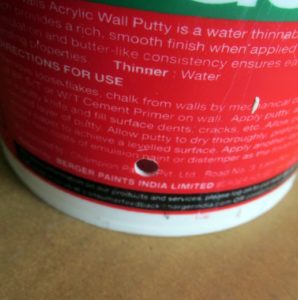
Next I marked a point just below the barrier level in the bucket and made an overflow hole using a drill.
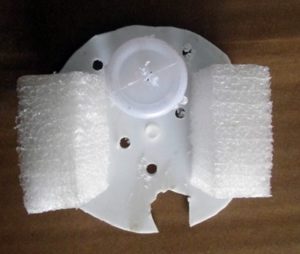
I cut out two pieces from a styrofoam board and attached it to the bottom of the barrier using glue to support the barrier. The height of the supports is same as the height of the wick. I also attached the wick to the barrier by pushing in the wick into the hole.
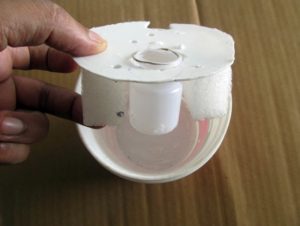
Now all I had to do is assemble the pieces.
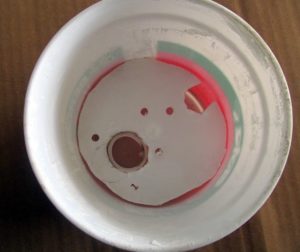
This is how the assembled container looks like.
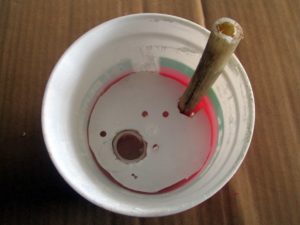
In the above pic there is gap between the barrier and the wall of the container. That will cause the potting soil to fall into the water storage section of the planter. But this can be easily avoided by placing a garden cloth between the potting soil and the container.
Finally I packed some potting soil firmly in the wick and then filled the container with potting mix. I filled in water using the watering pipe and I was done.
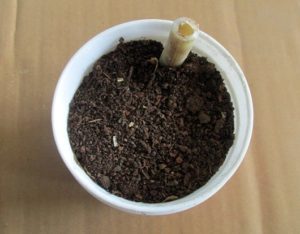
Drip Irrigation Systems
In drip irrigation method watering is done at the base of the plant drop by drop so that there is no run off. Hence water is used efficiently and the wastage is reduced. However wastage due to evaporation is still there in this system. Drip irrigation systems can be converted into self watering systems using a little bit of technology.
The water flow in the system can be controlled by a timer attached to the valve at the water source. The controller can be programmed to open the valve at fixed time in a day or it can even be controlled from a remote location using a transmitter and receiver pair.
Self watering container and systems are a good way of saving water and making sure plants get water when you are away. But some of the options can be expensive if purchased from stores. Hopefully this post will help you save a lot of money by making your own self watering containers.


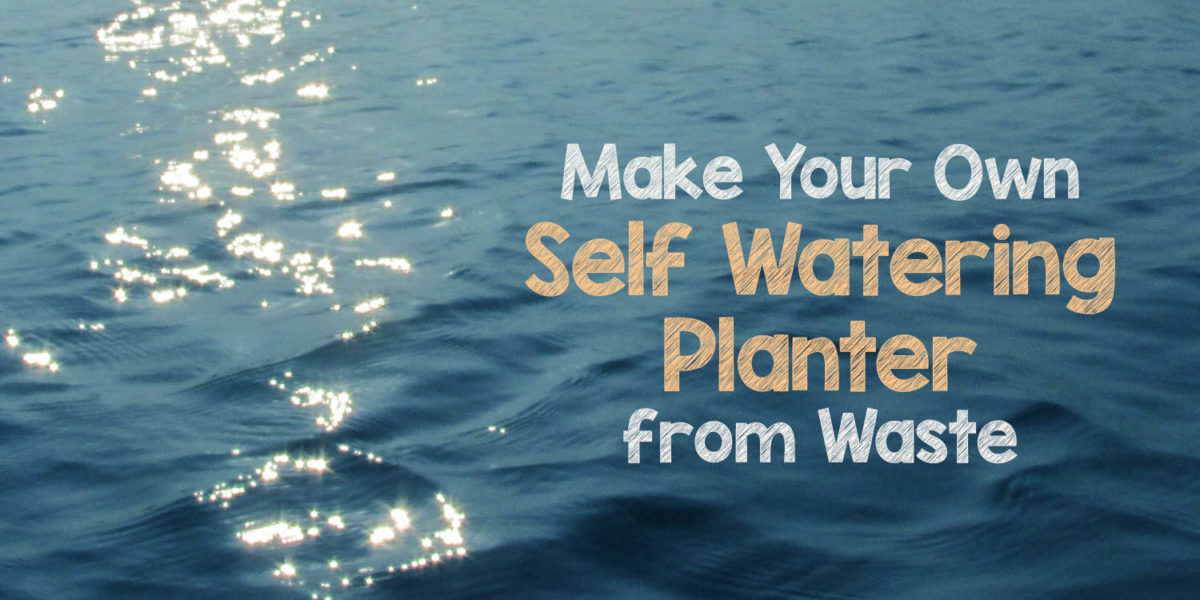
Hi,
This article is really very useful. Saving water is very important, and DIY style also increases the creattivity of a person. Serving natutre with fun.
Thank you
Iam just a beginner .started terrace gardning few months ago .but could not yeild any thing totally confused .Mali who comes do not do there job well can’t get good soil .compsting with kitchen waste is not working may b I am not doing it right way .
Terrace gardening in organic way is a little information intensive. It is better to go for training programs organised in your locality. I try to give out as much information as I can with my blog. Keep reading the blog. I hope it will be useful